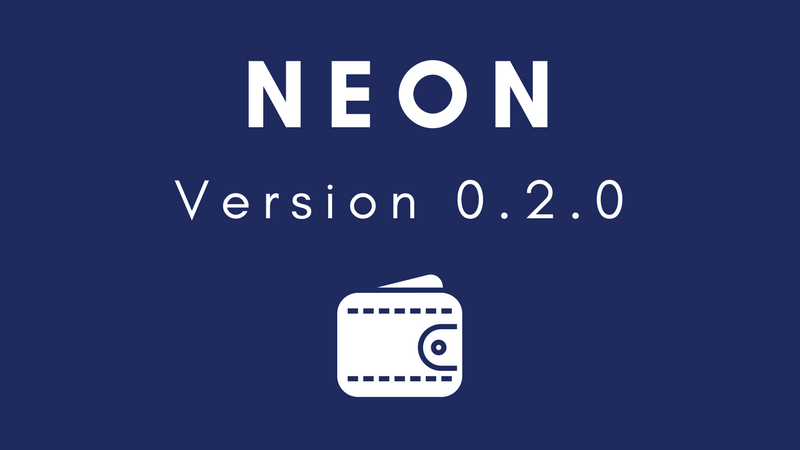
On the 9th of March, 2018, Alchemint, which claims to be a ”decentralized price-stable cryptocurrency management system” for the NEO blockchain, released an English translation of its whitepaper. The whitepaper announced Alchemint’s token, the SDUSD, which will be a stablecoin like Tether or BitUSD, with SDUSD coins held to a 1:1 ratio to the US dollar. However, unlike other stablecoins that are only pegged to the US dollar, Alchemint will provide further stabilization for its currency by mortgaging digital assets on the NEO blockchain, implemented via smart contracts, termed the “Smart Assets Reserve (SAR).”
How does Alchemint mortgage digital assets?
To understand how Alchemint’s mortgaging process works, let’s start by defining Alchemint’s key features and how they work in tandem with the mortgaging of digital assets.
Under section 2.3, page 19 of Alchemint’s whitepaper; it states that Alchemint provides an “application-level digital currency (SDUSD) through distributed ledger technology,” with a series of “risk control measures,” including the mortgaging of digital assets, and the management of those assets market value. With these risk control measures in place, the holders of Alchemint’s stable coin will be protected from the fluctuations in market value of their collateral. Also, all mortgaged assets are controlled using smart contracts, thus eliminating the risk of embezzlement or absence of Alchemint. This leads us to how Alchemint’s SAR fund works together with the mortgaging of assets. This process is quite simple to explain, as it’s almost the same process that banks use for lending to mortgagers.
Alchemint’s process of mortgaging digital assets works like this:
- First, a user creates a SAR and sends then sends the NEO cryptocurrency for mortgage
- The SAR will then evaluate the NEO deposit, together with its mortgage rate of 200% to send an amount of SDUSD back to the user’s account. For example, someone might send 10 NEO into the SAR, and the market price is $100 USD. The mortgage rate is 200% so that the SAR will create a total of $500 SDUSD
- If the user wants to withdraw the 10 NEO they sent to the SAR; they must pay back $500 SDUSD back to the SAR and pay a commission fee. Also, nobody can embezzle or steal the mortgaged NEO amount before the withdrawal
- In the case that NEO will break its “liquidation level,” which means is the price of NEO falls beyond a certain threshold, the mortgager must make an additional investment of NEO to establish the value above the liquidation level. If the mortgager takes no action, then Alchemint may choose to liquidate this SAR, and the user may incur additional fees
The liquidation of assets happens in finance and real estate too, so this should not be seen as an unfair practice. A bank will refinance a loan and ask for the house as collateral. The mortgager must make repayments on their investment even if the value of their home falls. Otherwise, the house will be sold at public auction. Alchemint works in the same way but with the liquidation of digital assets.
This process of liquidation is required for Alchemint to keep its currency stable, or the minted SDUSD coins would not have the collateral to support organic growth.
Just like Bitcoin and all other cryptocurrencies, the price of NEO also fluctuates according to trends in the market. It’s a good thing if NEO’s price increases, as this will also increase the market value of collateral and the mortgage rate will be higher, thus reducing investment risk. On the other hand, if the price of NEO falls and the value of NEO is less than SDUSD, the price of SDUSD could fall below 1 US dollar, which would defeat the premise of having a stable coin tied to collateral. For this reason, Alchemint has automatic liquidation to solve this issue. This process guarantees that SDUSD has enough value of the collateral.
There are also numerous risk parameters and modules built into Alchemint to ensure that its SDUSD tokens remain liquid and the currency priced according to its mortgaged assets, all of which can be explored in detail through Alchemint’s whitepaper.
Alchemint’s Roadmap
Section 2.6, page 37 of Alchemint’s whitepaper explains how its team plans to roll out the Alchemint platform together with its SDUSD token. There are three primary stages of Alchemint’s rollout, named Genesis, Expedition, and Elysium. Genesis will focus on building the required infrastructure for the coin to prosper. The expedition will refactor its blockchain and finance ecosystem based on stablecoins, and Elysium will mark the time when Alchemint’s liquidity reaches trillions of dollars in value, and the beginning of a gradual process to unlink Alchemint from fiat currencies.
Below is a timeline for how Alchemint intends to achieve this:
- 2018/06 – Single asset mortgage support, browser wallet console, decentralized exchange cooperation on testnet
- 2018/09 – Launch on mainnet, app wallet console, $1 million trading debt ceiling of the public test
- 2018/11 – Alchemint V1.0 launched, the Alchemint committee will determine the relevant risk parameters, SDUSD would be launched on partner exchanges
- 2019/04 – Alchemint V2.0 launched, multi-asset exchange support, failback Alchemist feature, market forecasting mechanism
- 2019/10 – The supply of stable coins to exceed $10 billion, a variety of digital goods will be supported, (gold, real estate) and full support from global exchanges
- 2020/01 – Start refactoring blockchain + finance ecosystem based on stablecoins, such as lending, payment, finance, etc
- 2020/06 – Alchemint 3.0 finally launched, introducing quantity theory of money to Alchemint stable mechanism
- 2021/01 – The supply of stablecoins will exceed $100 billion, a large number of stablecoins will exist on the blockchain, stablecoin will be widespread as a means of payment, additional business scenarios
Sources of Funds
Alchemint will announce its initial ICO when it is ready to raise capital for its expenditures, which will be one primary means of funding for the platform to become a reality. A secondary source of funding will come from its regular operations, which include the sales of research and development products, transfer or authorized use of patents, academic exchanges, and contributions, etc.
In total, there will be 1 billion tokens minted by the platform, and they will be distributed as follows:
- 30% Community Development Fund: maintains the continuous development and operation of the Alchemint project
- 20% Public Sale: Used for the platform’s daily activities like marketing, development, and finance, etc
- 15% Private Investor: Private investors will have influence inside and out of the industry and will be helpful to Alchemint
- 10% Cornerstone Investor: Cornerstone investors provide essential help and help with a resource for the development and project of the Alchemint project
- 10% Founding Team Development Team: The founding team assists with the operations of the project, making them an essential resource for the company
- 10% Commercial Promotion: Setup to maintain strategic support for the project
- 5% Consultant: Fee for consultants and legal advice
Team
- Sun Ming: Fenbushi Capital Legal Advisor
- Professor Wang Yanming: D. in Mathematics
- Chen Yu: Founder of Juxiu Capital
- NEO Council
- Pauline Xu: Hayek Capital Founder
- Liu Ming
- Cindy Fang: BK Fund, Co-Founder CFO, HKICPA
- Zhang Ting: Chief Financial Master
- Qi Feng: Chief Technology Officer
- Zhang Wei: Product Director
- Steel Chen: Core Development Engineer
- Lei Geng: Core Development Engineer
- Joe Wu: Core Development Engineer
Investment Institutions:
- Fenbushi Capital
- NEO Council
- Juxiu Capital
- Hayek Capital (Private)
- BK Fund (Private)
- Signal Ventures (Private)
- Starwin Capital (Private)
- Cryptos Partners Capital (Private)
Governance
The Alchemint Foundation is a non-profit entity that was established in Singapore in January 2018. The foundation was set up to advocate transparency and self-governance, as well as to boost safety and “harmonious development” for open source ecosystems.







About The Author: Matthew North
Matthew North is a freelance writer and journalist who resides in East Asia. He spends his time writing and learning about financial technologies like the Blockchain and digital currencies. You can follow him on twitter @fintech_matthew.
More posts by Matthew North